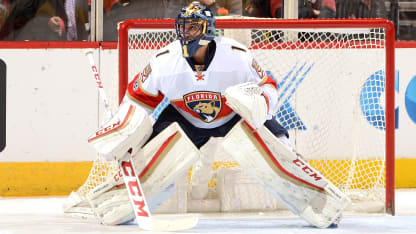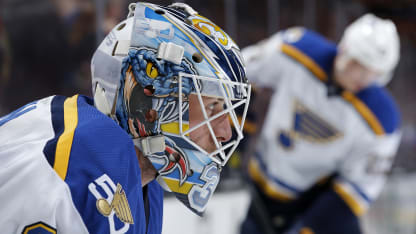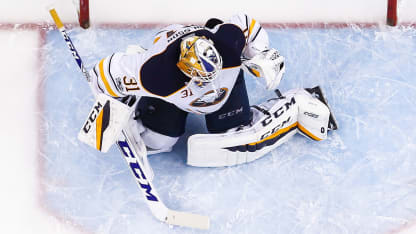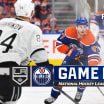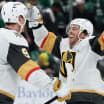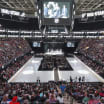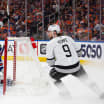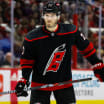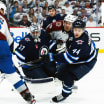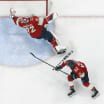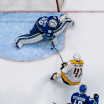That may help explain some of the struggles for first-year No. 1 goalies, such as Jake Allen of the St. Louis Blues or Connor Hellebuyck of the Winnipeg Jets. Allen, who recently was left home from a road trip to reset, had stints as the starter during the previous two seasons; however, this is the first full season for Hellebuyck as a No. 1 in the NHL. Edmonton Oilers starter Cam Talbot went through similar struggles early last season, his first as the No. 1, and so did then-Oilers backup Anders Nilsson, now with the Buffalo Sabres, when he took over the starting role for six weeks through mid-December last year.
"That's probably the biggest challenge for every goalie in this league when you are playing a lot is to get the good quality of practice," Nilsson said then. "You have to think about resting your body physically, but also mentally. … You need to save yourself for a game, so you can't drain yourself in practice and then have nothing left. It's something you have to learn."
Finding the time for both is even harder this season.
Jets coach Paul Maurice spoke about a need for goalie-specific practice time when asked about the logistics of keeping three goalies after calling up Ondrej Pavelec from the American Hockey League and keeping Hellebuyck and Michael Hutchinson. Rather than cramming three goalies into two nets at team practices, the Jets had Hellebuyck and Hutchinson alternate spending time working alone with goalie coach Wade Flaherty.
"It's difficult to keep three goaltenders game-ready, but we have something a little unusual here because we just lacked so much practice time," Maurice said. "We can take a goaltender out of [our] main practice and get 45 minutes of really specific technical work, something that is difficult to do because we need goalies to practice. So we have been able to take a guy out of the normal practice rotation and [get] him back to feeling good, feeling sharp."
There are few absolutes when it comes to goaltending, so it's not surprising a decrease in goalie-specific practice time hasn't affected all goalies similarly. After a slow start, Frederik Andersen is excelling in his first full season as a workhorse No. 1 with the Toronto Maple Leafs, as is his former playing partner with the Anaheim Ducks, John Gibson. A decline in practice time also isn't completely to blame for the save percentage dropping to .913, its lowest level since the shortened 2012-13 season, or for uncharacteristic recent slumps from established starters like Carey Price of the Montreal Canadiens and Henrik Lundqvist of the New York Rangers.
